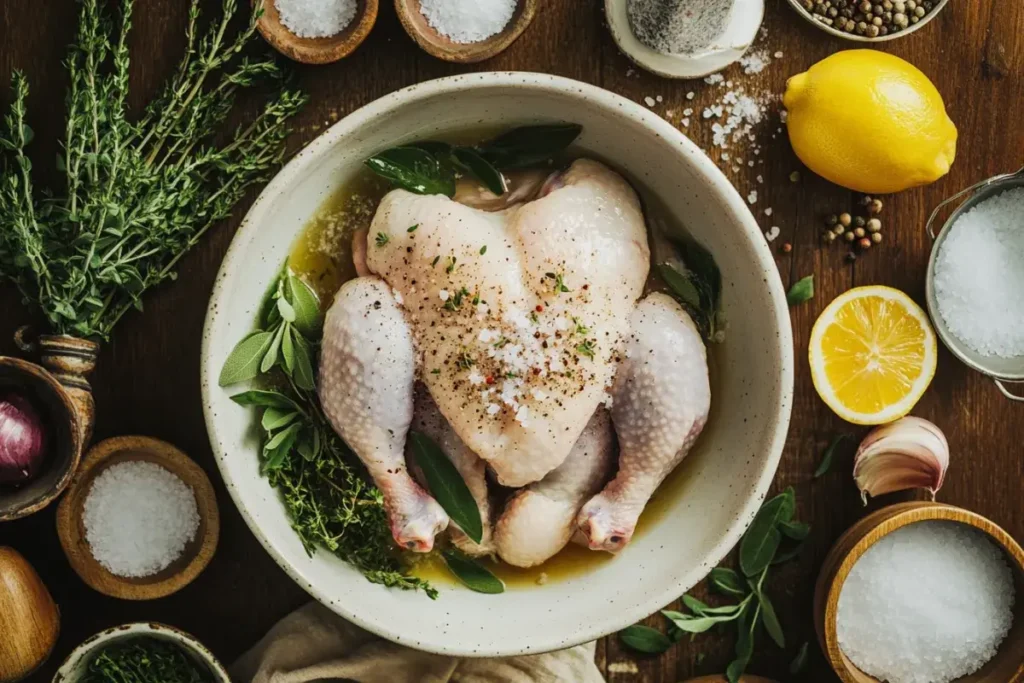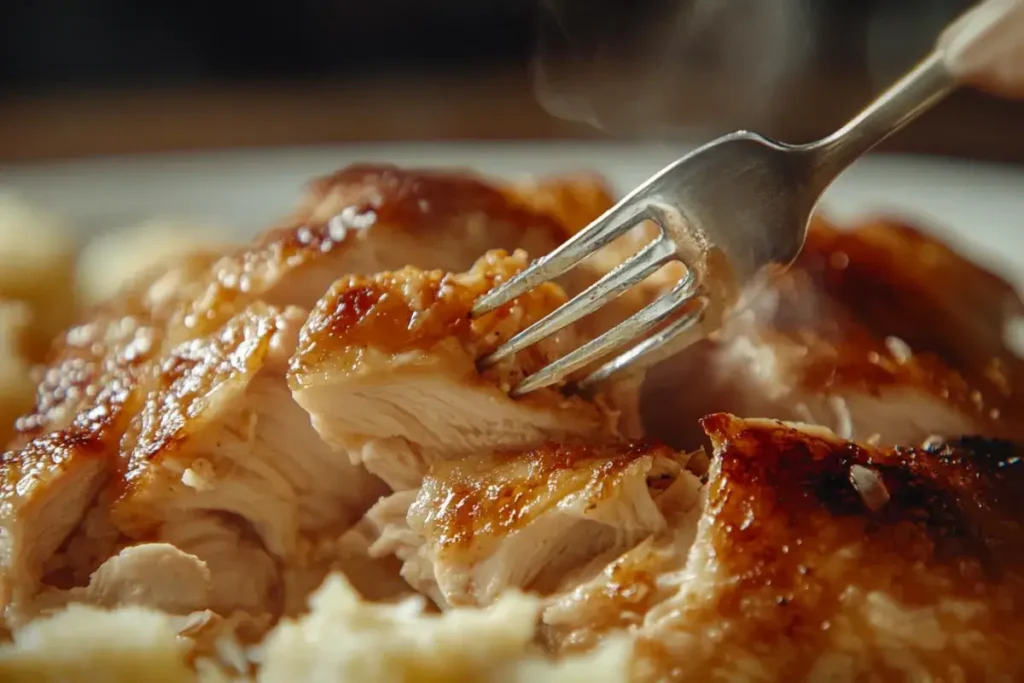When it comes to cooking, one of the most desired outcomes is knowing how to make chicken very soft and tender. Whether you’re preparing a family dinner or hosting a gathering, no one wants to bite into dry, tough chicken. Achieving that perfect softness can elevate your dish and impress your guests. Therefore, in this article, we’ll explore various methods to make chicken tender, focusing on techniques and tips that anyone can apply.
The Science of Chicken Tenderness
To begin with, understanding how to make chicken very soft and tender involves knowing the science behind chicken tenderness. At a cellular level, chicken is composed of muscle fibers and connective tissues. The tenderness of chicken primarily depends on two key factors:
- Muscle fibers: Shorter fibers usually mean more tender meat.
- Connective tissues: These can make meat tougher if not broken down through cooking methods.
Thus, the goal is to either select the right cut or use techniques that help break down these fibers and tissues, resulting in succulent, juicy chicken.
Selecting the Right Cut of Chicken
Next, choosing the right cut of chicken can significantly impact the final result. Here’s a quick rundown of common cuts:
- Chicken Breasts: Lean and popular, but they can easily become dry if overcooked.
- Chicken Thighs: Higher fat content makes them more forgiving and flavorful.
- Drumsticks: Juicy and tender, they are perfect for roasting or grilling.
Moreover, For optimal tenderness, consider using thighs or drumsticks while learning how to make chicken very soft and tender. Their higher fat content helps retain moisture during cooking, ensuring a better texture. Additionally, the cooking method you choose will interact with the cut of chicken, so keep that in mind as you select your ingredients.
Marinades: A Key Step in How to Make Chicken Very Soft and Tender
One of the most effective ways to learn how to make chicken very soft and tender is through marination. Marinades not only infuse flavor but also help in breaking down tough fibers.
Types of Marinades
There are a couple of main types of marinades to consider:
- Acidic Marinades: Ingredients like yogurt, lemon juice, or vinegar help in tenderizing the meat by breaking down proteins.
- Oil-Based Marinades: These assist in moisture retention and can enhance flavor without overwhelming the dish.
Simple Marinade Recipe
Here’s a quick marinade recipe to get you started:
- 1 cup yogurt
- 2 tablespoons lemon juice
- 1 teaspoon salt
- Spices of your choice (such as garlic powder, paprika, etc.)
When you marinate your chicken for at least 30 minutes, or up to 24 hours for deeper flavor and tenderness, you’re maximizing your chances for a juicy result.
Furthermore, for more tips on effective brining techniques, refer to Bon Appétit – The Best Way to Brine Chicken. This guide provides excellent insight into the brining process and how it can transform your chicken dishes.
Brining: An Essential Technique for Soft and Tender Chicken
In addition to marinating, brining is another fantastic method to ensure your chicken stays moist and tender. Brining involves soaking the chicken in a saltwater solution, which helps the meat absorb moisture and enhances flavor.

How Brining Works
Here’s how brining can make a difference:
- Salt: It helps in breaking down protein structures, making the meat tender.
- Water: The chicken absorbs water, leading to juicier meat.
Simple Brine Recipe
To create a basic brine, mix:
- 1 cup salt
- 1 cup sugar (optional, for a touch of sweetness)
- 1 gallon of water
Soak your chicken in this solution for 4 to 12 hours before cooking for optimal results. As a result, you’ll notice a marked improvement in juiciness and flavor.
For a delicious way to use your brined chicken, check out our Smothered Chicken recipe, which combines tenderness with rich flavors.
Cooking Techniques for Tender Chicken
Now that you’ve selected your cut and prepared your chicken with marination or brining, it’s time to explore cooking techniques that enhance tenderness. Using the right cooking method is essential, as it can significantly impact the final texture of your dish.
Searing and Roasting for Tender, Juicy Chicken
First, consider searing and roasting your chicken.
- Searing: Start by searing the chicken in a hot pan for a few minutes on each side. This locks in moisture and creates a delicious crust.
- Roasting: After searing, finish cooking in the oven at a moderate temperature (around 375°F) until the internal temperature reaches 165°F. By doing this, you ensure a crispy exterior while keeping the inside moist and tender.
Once you’ve mastered searing, you can elevate your chicken dishes even further with flavorful sauces. Learn how to create a perfect gravy to pair with your chicken in our Chicken and Gravy recipe.
How Slow Cooking Helps Make Chicken Soft and Tender
Next, using a slow cooker is an excellent way to achieve tender chicken. Cooking on low heat allows the connective tissues to break down without drying out the meat. This method is particularly beneficial for tougher cuts, transforming them into melt-in-your-mouth delights.
Using Sous Vide to Make Chicken Very Soft and Tender
Additionally, sous vide cooking involves sealing chicken in a vacuum bag and cooking it in a water bath at a precise temperature. This method is exceptional for achieving incredibly tender and evenly cooked chicken. Since the temperature remains constant, you don’t risk overcooking your meat.
Pressure Cooking
Lastly, a pressure cooker can also produce tender chicken quickly. This method uses steam and pressure to break down tough fibers in a fraction of the time. It’s a fantastic option for those who want delicious results without spending hours in the kitchen.
Resting the Chicken
After cooking, letting your chicken rest for about 5 to 10 minutes is crucial. This simple step allows the juices to redistribute throughout the meat, ensuring that every bite is moist and flavorful. If you slice the chicken too soon, you risk losing valuable moisture, which can lead to a dry dish.
In summary, by following these guidelines, you’ll be well on your way to making chicken that is not only tender but also bursting with flavor. The techniques discussed—selecting the right cut, marinating, brining, and utilizing proper cooking methods—are all essential steps in your journey to perfecting tender chicken.
Common Mistakes That Lead to Tough Chicken
While we’ve covered the best methods to ensure tender chicken, it’s equally important to be aware of common pitfalls that can lead to disappointing results. Here are some mistakes to avoid:
Overcooking
One of the most significant issues is overcooking chicken. When chicken is cooked for too long, it loses moisture and becomes tough. To prevent this, always use a meat thermometer to check the internal temperature. Chicken should be cooked to 165°F; anything beyond that can lead to dry meat.
Not Using Enough Fat or Moisture
Another mistake is neglecting to use enough fat or moisture in your cooking process. Fat is essential for flavor and helps keep the meat moist. Whether you’re sautéing in oil or using a marinade with a good amount of oil, don’t skip this crucial step. Additionally, incorporating broth or adding moisture during cooking can enhance tenderness.
Skipping the Resting Period
Many people cut into chicken immediately after cooking, which can lead to a dry texture. As mentioned earlier, allowing your chicken to rest for 5 to 10 minutes is essential. This period lets the juices redistribute, resulting in more flavorful and juicy meat.
Best Tools and Equipment for Achieving Tender and Juicy Chicken
Using the right tools can significantly impact your cooking process. Here are some essential tools to consider:
Meat Thermometer
A meat thermometer is invaluable for ensuring your chicken reaches the perfect internal temperature. This simple tool can help you avoid overcooking and achieve the desired tenderness.
Marinating Containers
Using appropriate marinating containers can also enhance your preparation process. Opt for non-reactive containers like glass or stainless steel. This ensures that the flavors infuse well without any unwanted reactions.
Experimenting with Different Flavors
While tenderness is vital, flavor should not be overlooked. Experimenting with various spices and herbs can elevate your chicken dishes without compromising tenderness. Here are some ideas:
- Citrus Zest: Adding lemon or lime zest can brighten up your marinade.
- Fresh Herbs: Incorporate herbs like rosemary, thyme, or basil for aromatic flavors.
- Spices: Don’t hesitate to experiment with spices like cumin, paprika, or chili powder to add depth.
By playing around with flavors, you can create a unique dish that your family and friends will love, all while maintaining that tender texture.
Expert Tips for Achieving Tenderness
To further enhance your chicken-cooking skills, consider these expert tips:

Brine Before Cooking
As discussed earlier, brining can make a substantial difference. Even a quick 30-minute brine can improve the juiciness and tenderness of your chicken. Don’t underestimate this step; it’s a game changer!
Use Buttermilk for Marinade
Using buttermilk in your marinade not only adds flavor but also helps tenderize the meat due to its acidity. This is a popular method in Southern cooking and can yield delicious results.
Slow Cook on Low Heat
If you’re using a slow cooker, opt for the low heat setting rather than high. Cooking on low allows the chicken to become incredibly tender without drying out. This method works wonders, especially for cuts like thighs or drumsticks.
Test with the Fork Method
If you’re unsure whether your chicken is tender, use the fork method. Gently pull the meat with a fork; if it shreds easily, it’s perfectly cooked and tender.
Final Thoughts on Cooking Tender Chicken
In conclusion, achieving tender chicken involves a combination of selecting the right cut, utilizing effective marinating and brining techniques, and employing proper cooking methods. By avoiding common mistakes and following the expert tips provided, you can transform your chicken dishes into flavorful and tender masterpieces.
Whether you’re preparing a weeknight dinner or a special occasion meal, these techniques will ensure that your chicken remains juicy and delicious every time. Remember, practice makes perfect, so don’t hesitate to experiment and find the methods that work best for you.
FAQs
- What’s the best way to cook chicken to keep it moist?
- The best way is to cook it using methods like slow cooking, roasting, or sous vide, and ensure you don’t overcook it.
- How long should you marinate chicken for tenderness?
- Ideally, marinate chicken for at least 30 minutes up to 24 hours for optimal tenderness and flavor.
- Does brining really make a difference?
- Yes, brining enhances moisture retention and flavor, resulting in juicier and more tender chicken.
- Can you make chicken tender without marinating?
- Absolutely! Cooking techniques like slow cooking, sous vide, and brining can help achieve tenderness without marinating.
- What are the best cooking methods for chicken?
- The best methods include slow cooking, roasting, pressure cooking, and sous vide, all of which can produce tender and juicy chicken.
By applying these techniques and tips, you’ll master the art of cooking tender chicken, creating delicious meals that everyone will love. Happy cooking!

